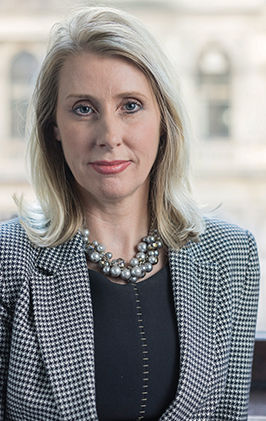Clydesdale and Yorkshire Banks’ group chief operating officer, Debbie Crosbie, speaks to Joy Macknight about how the challenger bank is better serving its SME client base by revamping its IT infrastructure.
CYBG – owner of Clydesdale and Yorkshire Banks – has a long history of building customer relationships in its core regions. Its full-service capability across retail and small and medium-sized enterprise (SME) banking also distinguishes it from other neo-banks.
“We are ahead of many challengers because of our full product range, customer numbers and new digital platform,” says group chief operating officer Debbie Crosbie. She adds that the UK banking group has made “great progress” in its digital transformation since demerging from National Australia Bank 18 months ago.
Its new platform, iB, connects the historical banks as well as its digital-only bank, B. The group uses just one platform – with a set of shared digital services – for both retail and SME customers. Importantly, iB is built on open architecture and application programming interface (API) standards, so CYBG can easily connect to fintechs and other potential technology partners.
Targeting SMEs
The group aims to use iB to create a truly digital experience for SMEs, which will make a meaningful difference to this sector because they are incredibly time poor, according to Ms Crosbie. Moreover, CYBG’s new platform will help lower the cost to serve SMEs, which she believes is one of the reasons this segment has historically been underbanked.
Small business customers want to have all their banking in one place and be able to connect to services easily, she says. CYBG is working with fintechs and other partners on how they can serve this customer base better, by exploring ways to help businesses integrate information from their bank accounts into other business applications, such as accounting, invoicing, payroll systems and so on.
CYBG is also working with Ezbob, which allows SMEs to apply online for loans. “The collaboration will allow us to offer our small business customers a same-day loan through a friction-free digital environment, which over time will be fully integrated into our systems via iB,” she says. The service will launch with a six-month pilot in November.
When engaging with fintechs, Ms Crosbie firmly believes the relationship must be seen as a partnership. “It’s a powerful combination, especially when banks are prepared to act as a partner,” she says. “While fintechs can bring a much better insight into the loan application process, for example, banks must also invest in the relationship and help fintechs in areas such as regulations, scaling technology and security implications.”
PSD2 and open banking
CYBG is gearing up to capture the opportunities presented by the Payment Services Directive 2 (PSD2). “We have taken our product platform and developed a comprehensive set of microservices. Effectively, we have isolated the back end and now surface data through new digital services,” says Ms Crosbie.
She believes that PSD2 and its UK equivalent, Open Banking, will challenge banks’ business models and force them to rethink where they add value. “Banks have an opportunity to act as a trusted aggregator and offer a unique proposition through creating a broader ecosystem to address SME and retail requirements,” she says, adding that this could encompass a wider set of services beyond solely financial ones.
Currently, the bank is piloting aggregation services and developing new services, such connecting to Amazon’s Alexa voice service via APIs. The bank is planning to launch a beta version of the latter in the coming months.
CYBG is well positioned to take advantage of market changes, says Ms Crosbie. With its full-service platform and 2.8 million customers, it can provide transaction banking and lending services on the one hand, but is also small enough to be nimble.
“Being big traditionally gave a bank many advantages, such as economies of scale and investment levels, but that is turning around. Technology is now all about agility, collaboration and bringing data services together with outstanding user experience capabilities. For the first time, smaller players can win in this space,” she says.
Innovation in the branch
In May, CYBG opened its London innovation lab, Studio B, which doubles as a branch. The bank uses the lab to test new products and run hackathons, as well as engage with fintechs and customers. Its 'labbers' perform sprints to address specific challenges, not just technology and banking but also broader social issues.
Although the space has a different look and feel to a traditional branch, it maintains the facilities and functions customers expect from a high street bank – so they can open an account or apply for a mortgage or credit card, for example. An innovation lab that does not serve customers or is not aware of their problems risks becoming too detached to be useful, says Ms Crosbie, who points out that Studio B is not just for customers but also for staff.
“We want to change the corporate mindset from an old-style complacent bank to a new thinking, customer-focused brand. This space serves as a strong cultural signal to the business that we can’t rest on our laurels but must modernise and focus on customer experience and results,” she says.



